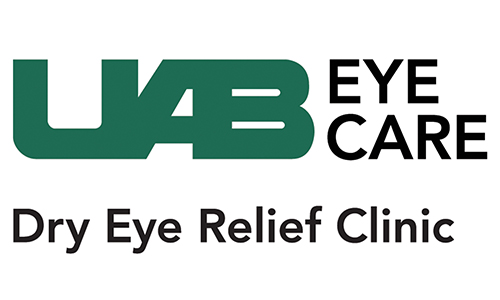A new clinic at UAB Eye Care is providing a specialized approach to treating dry eye disease.
The Dry Eye Relief Clinic offers the full scope of treatment services for the common disorder that occurs when tears aren’t able to provide enough lubrication for the eyes.
The services offered in the clinic include premium in-office procedures like LipiFlow, which is a thermal pulsation technology used to improve dry eye symptoms.
UAB Eye Care, which is operated by the UAB School of Optometry, has long provided treatment for dry eye disease.
However, the Dry Eye Relief Clinic provides specialty care that optimizes treatment outcomes, says Jillian Ziemanski, O.D., M.S., an assistant professor at the School of Optometry, who has spearheaded the development of the clinic.
“Our Dry Eye Relief Clinic offers a specialized approach to better understand what factors are contributing to the patient’s disease so that a more tailored management plan can be developed,” she says.
The clinic was first formed in January 2016 as part of UAB Eye Care’s Ocular Disease and Low Vision services, but efforts are now underway to expand it into its own clinic within the School of Optometry’s practice.
The idea to develop the Dry Eye Relief Clinic and increase the scope of care for dry eye patients came about as the School of Optometry acquired more faculty with expertise in dry eye disease and as awareness has grown that tens of millions of Americans annually suffer from dry eye, Ziemanski says.
“About half of Americans experience dry eye symptoms, and this number is going to continue to grow,” she says. “The most commonly affected demographic is postmenopausal females. So with the aging population, we’re going to see more and more dry eye.”
Dry eye is now starting to appear earlier in life as a result of a surge in screen time, Ziemanski says.
“Dry eye also tends to progress in many patients,” she says. “So with such a young age of onset, we need to be proactive in management to prevent a lifetime of ocular discomfort and potential visual changes.”
While chronic dry eye symptoms are common, they are not normal, says Ziemanski.
“Many patients ignore dry eye, thinking that it’s normal or that it isn’t a big deal,” she says. “It isn’t normal, and it deserves the attention of both the patient and the doctor.”
Make an appointment at the Dry Eye Relief Clinic by visiting uab.edu/eyecare or by calling 205-975-2020.
